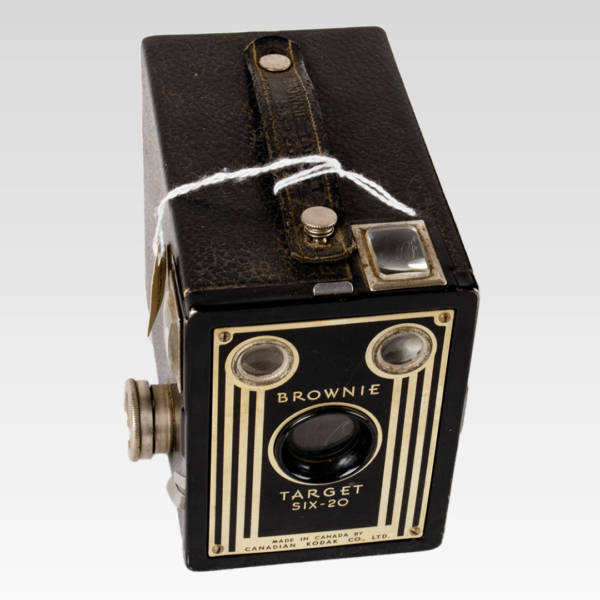George Eastman, born 1854, set about revolutionizing the way that photography worked in 1880s. In 1888, he successfully eliminated the need for complicated wet-plate processing, which involved applying chemicals promptly before and after taking the photograph, and was very time and light sensitive. This he did through the invention of roll film, which could be entirely contained in the camera body.
Photography was, at this time, reserved for people with money and time to spare, and was not accessible to the average person. Even Eastman’s convenient new camera came with barriers, as it cost $25, which is the equivalent of several hundred dollars today. Photography would only at last become more accessible in 1900, with the invention of the Brownie Camera, which cost just $1.
The name ‘Brownie,’ in this case, refers to the sprites of Scottish folk tales, who had been popularized through the drawings of Palmer Cox. Cox was a Canadian writer and illustrator, and his books and comic strips about The Brownies were widely loved. Brownies were conceived of as mischievous and helpful domestic entities, who could scuttle about unseen and do various tasks.
1973.029.006
No. 2 A Brownie Camera (c. 1907)
This model was a long standing classic. Produced between 1907 and 1936 with various alterations, it cost just $3.00 at first. This camera produced a large, postcard sized negative, which made the amateur a competitor against the professional postcard photographer.
1976.004.026
Brownie Target Six-20 (1946-1952)
This gorgeous Brownie camera sported Art Deco designs, and would have cost just $3.50 when it was first made. It uses 620 film, and is still a popular model among vintage camera enthusiasts.
The Brownie Camera was the first camera to be explicitly marketed to children. It was easy to use compared to other cameras, and could be loaded in the daylight.
Through the advertising schemes used by Kodak, and because of the affordability of the Brownie camera, many amateurs and middle class people were able to discover the joys of photography. In a world where images were increasingly beginning to dominate in media, the Brownie camera allowed the average person a pictorial voice, and something of a chance to contribute to or change the narrative.
A seemingly small change, like that caused by the development of roll film and the affordable Brownie, was an important step in the popularization of the snapshot, and in the growth of the everyday photographer.
Today, cameras are more accessible that ever. We have them in our phones, and carry them almost everywhere. But without the little Brownie camera, a generation of photographers might never have been born.
Six-20 Brownie Junior (1939-1943)
The camera shown here was the UK model of the Six-20 Brownie Junior, and it lacks the Art Deco designs seen on the U.S. model. It was made of cardboard, wood, and metal, and shot 620 film.
Baby Brownie Special (1939-1954)
This adorable little palm sized plastic camera cost just $1.25! It even included a direct optical view finder and a simple shutter release.
Kodak Brownie Reflex (1940-1942)
This camera was crafted from Bakelite, a popular material for camera-making at the time. Brownie Reflex cameras were popular for many years, and you would have been likely to see versions of this camera around as late as the 1960s.
Brownie Starmite (1960-1963)
This adorable little camera sported a plastic body and a built in flash system, and it could shoot using black and white or colour film. It was one of a variety of Kodak Brownie Star cameras, all of which were very popular in their time.
click the images below to view in larger format












